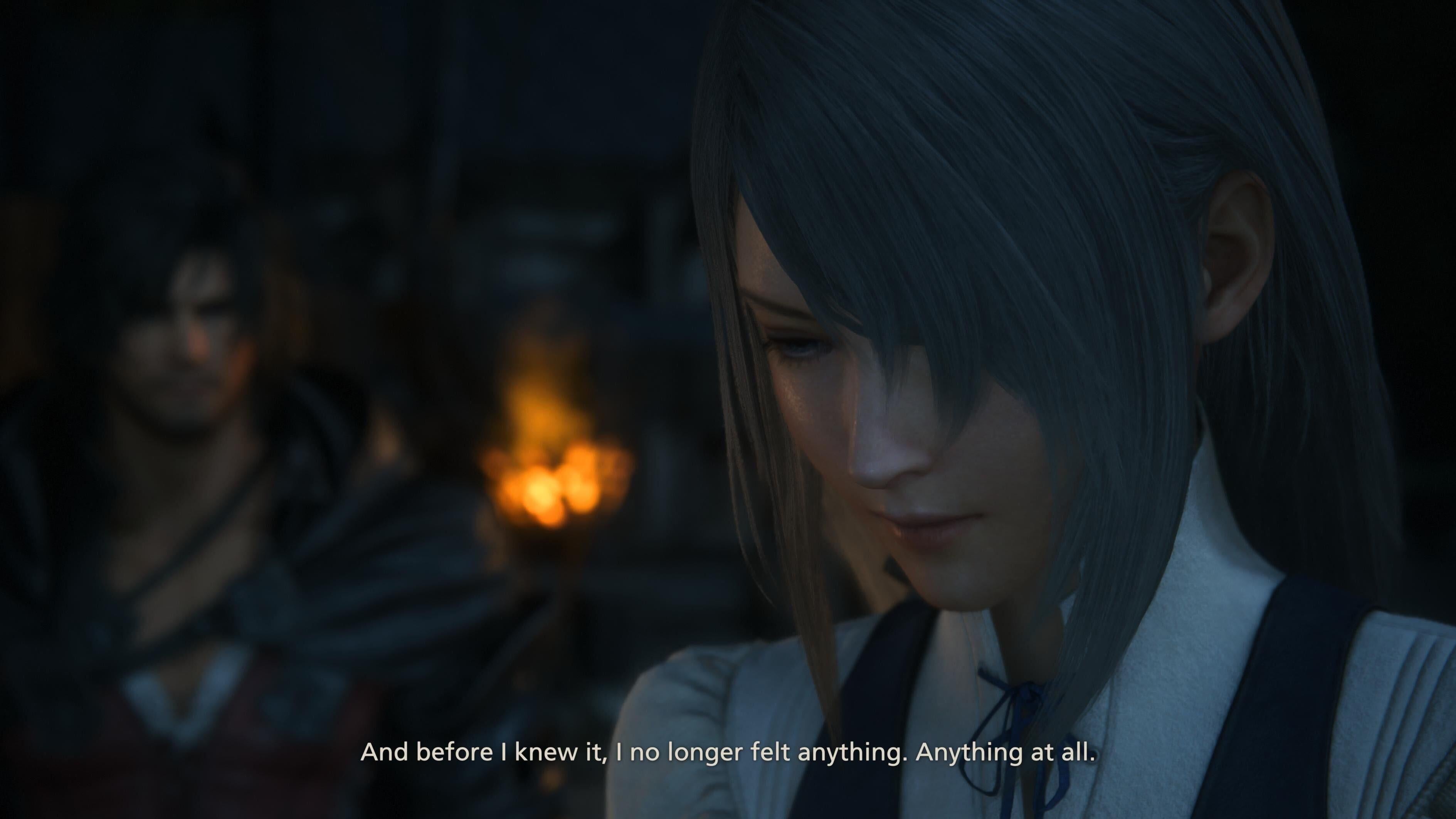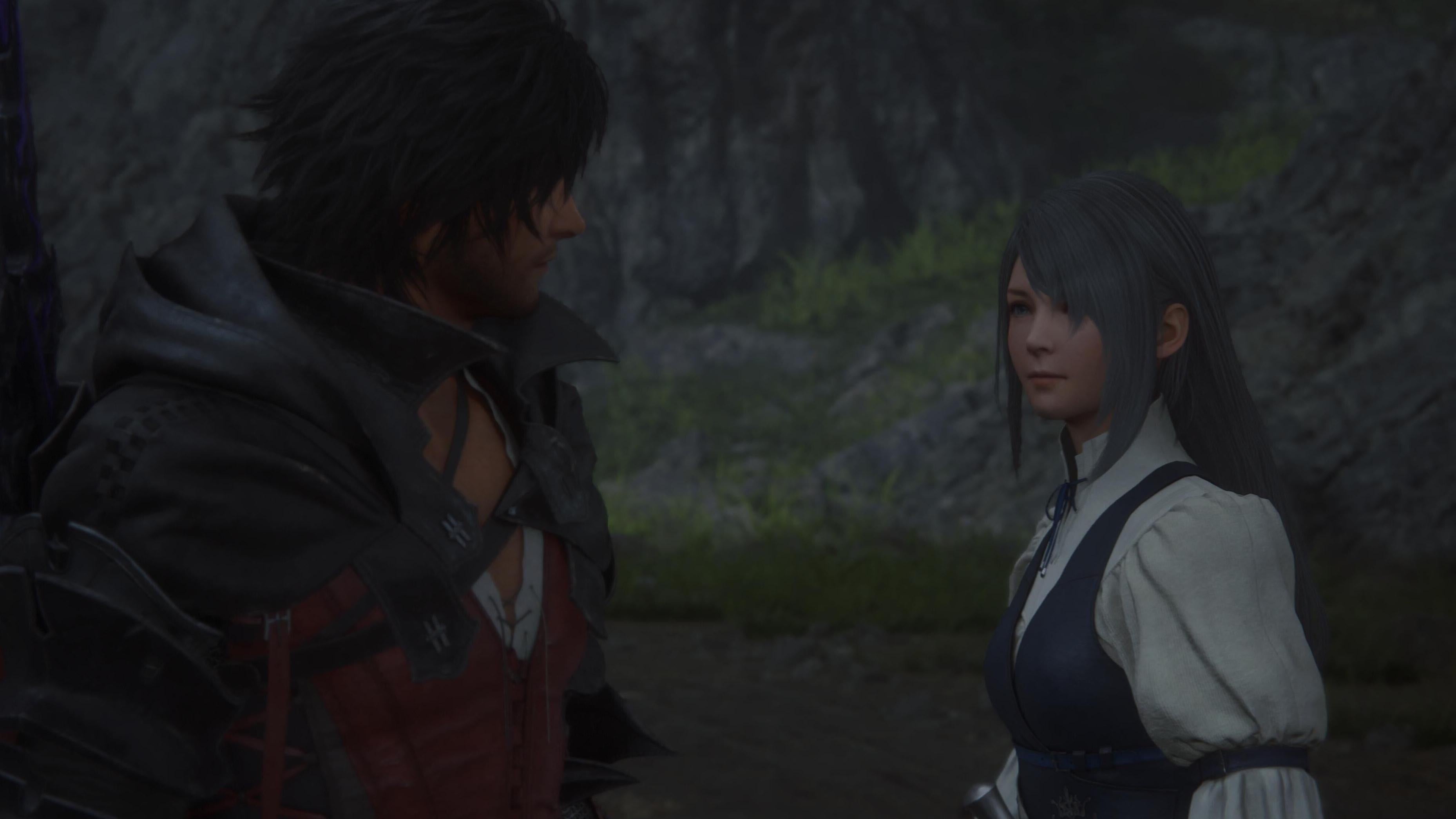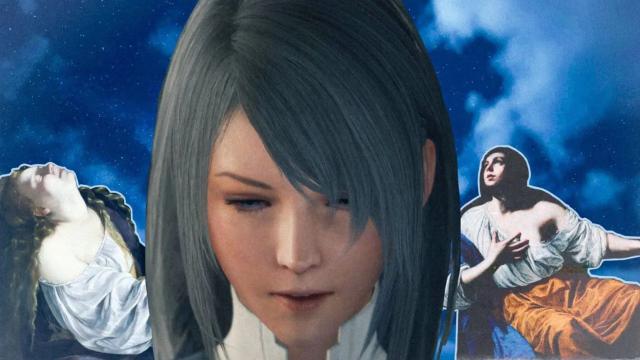I’m sure that I love Jill Warrick — Final Fantasy XVI’s female lead — because her hair is healthy and long, gathered at the end with a ribbon, with one delicate braid as ornament. I also love her, I think, because she wears a cream-colour chemise under layers of blue leather, contrasting like the small icicles that form at the lip of a flower during a confusing spring. She’s pretty. But I keep waiting for the moment in FFXVI where she becomes much more than that, and it doesn’t come.
Video games have had this problem for decades, building beautiful women and hoping that beauty is enough. And women in the industry, like Anita Sarkeesian, who discussed aspects of the topic in her popular Tropes vs Women in Video Games video series a decade ago, and Kotaku editor-in-chief Patricia Hernandez, who wrote about perfectionism in Lollipop Chainsaw around the same time, have always been disappointed by it.

But I’ve been recently asking myself how much of a problem I think it is. Aside from her character design, which has inspired elaborate cosplay and starry-eyed fanart in under a week since the game’s release, I like Jill because she’s a woman I can relate to in a video game. At a time when mainstream games seem to be warring with themselves over whether to continue to write nauseating caricatures or the Urban Dictionary definition for “strong female lead,” that’s rare.
In temperament and backstory, Jill is not a cartoon of what a woman is. When she’s first introduced to us as a child, praying under a full moon for protagonist Clive’s safe return, letting a tear glitter down her cheek with no self-consciousness, we’re shown that Jill is passionate. She’s spiritual, and she’s not afraid to bear tenderness.
Jill insists she’s changed after Clive reunites with her as an adult — out of necessity, she’s killed people with the frost spirit she plays vessel for — but throughout FFXVI’s first act, I only see more evidence of her deep emotion. She still cries freely. She’s hopeful when she talks to Clive about fate, though it’s been wicked to her so far.
I like to think of myself as romantic like this, too, and I’m happy that Square Enix doesn’t present gentleness as a weakness, as many stereotypically female traits are often portrayed, but as part of what makes Jill impressive. But Jill never speaks. In pivotal scenes, she’s not a woman, but a prop — interchangeable with the trees and stars and a dog, Torgal, that waits by Clive’s side, muzzled by devotion, exactly like she is.

FF16’s Jill Warrick is silent when she shouldn’t be
During the game’s complicated, extended cutscenes, I go back-and-forth between admiring Jill’s clothes and deciphering her blank stare. She’s totally being quiet here because she’s reminded of her past, I catch myself thinking. Well, I wouldn’t know what to say in this situation, either.
Eventually, I think of another cute girl I love: Hello Kitty, who has sent kids’ hearts pumping with her red bow since 1974 and controversially has no mouth.
That’s to her benefit, creator Sanrio has said. “She is so empowering because she can be anything you want her to be,” Sanrio senior vice president of marketing Jill Koch told Time in 2014. “She makes you feel understood,” Hello Kitty designer Yuko Yamaguchi agreed.
Characters like Hello Kitty and Jill make me feel like I might have tricked myself into something. They both have a few redeeming qualities, but the nuances of their personalities are decided by me as a fan, or worse, as a shallow girl. This seems particularly unfair for Jill — her companion Clive talks and reveals so much about himself constantly, and yet in all the time they spend together, she never has the chance to do the same.
The game takes Clive’s emotional development so seriously, some boss fights even double as physical manifestations of his internal conflict. After one of these fights, he dismisses his shakiness to Jill as “nothing,” turning silence into something prickly and pointed, and she passively accepts it. Locked in battle, later, Clive instead channels his suffering into anguished screams and beads of blood sacrificed for what he and Jill both believe in — self-determination, respect for magic — while Jill continues to mumble and stare.
I start seeing her like a Renaissance portrait of Mary, or of somebody’s widow, both of whom may have convictions and profound love inside them but, as far as anyone else can tell, are frozen forever in silence. Watching Jill tacitly summon cold crystals out of the air while I push Clive to massacre enemies with the Phoenix’s sweeping, fiery plumes, I’m reminded of the poem “White-Eyes” by Mary Oliver: “the clouds — / which he has summoned / […] that loves us, / that is asleep now, and silent — / that has turned itself / into snow.”

Women in video games deserve to be multidimensional
While it is true and observable that being pretty is a shortcut to many things — social psychology experiments have suggested that beautiful people are often assumed to be smart and kind — it doesn’t automatically elicit good video game characters. And as Jill demonstrates, it doesn’t equate to effective storytelling.
She is a reminder that developers need to take their video game women more seriously, beyond the obnoxious old tropes they used to stuff them into and the surface-level feminism they try awkwardly to make fit. To make this possible, real women need to continue to be active and visible parts of the video game industry. Otherwise, we’re stuck for eternity with characters like Princess Peach and Ashley from Resident Evil 4, women who are pretty enough to love and root for, but too hollow to understand.
But games keep refusing to let us. The industry prioritises male gamers’ and characters’ experiences while swearing it’s changed. Recent research indicates that female characters have substantially less dialogue in games — including those like Final Fantasy X-2, in which they are protagonists — than male characters. Those women are also almost always cisgender and white, so games limit their thoughts while never even giving other kinds of women the opportunity to have them.
This shouldn’t continue — it doesn’t need to. I know that some shells have radiant, milky pearls inside. And I think that Jill has more to give than Square Enix allowed her to. But even though every scene I’ve seen in my playthrough feels like a missed opportunity, I like her anyway — I’m glad she’s beautiful. I’m just frustrated because I know her voice is more precious.

Leave a Reply